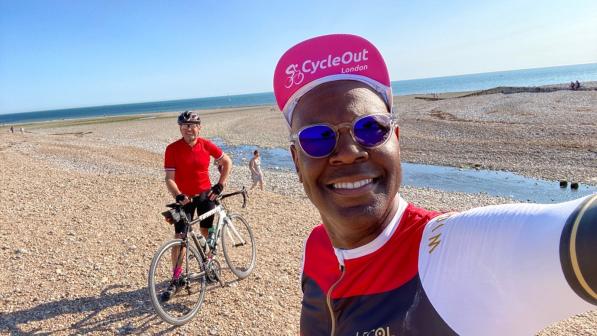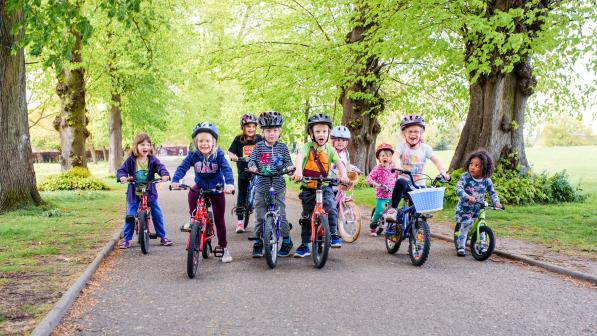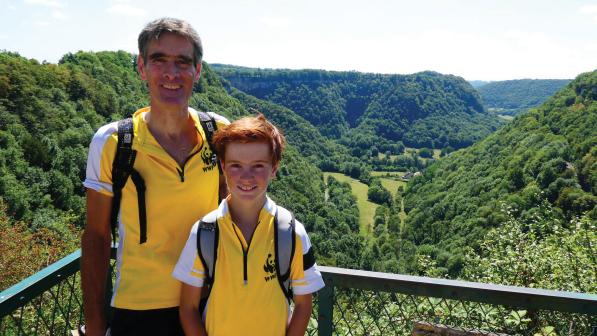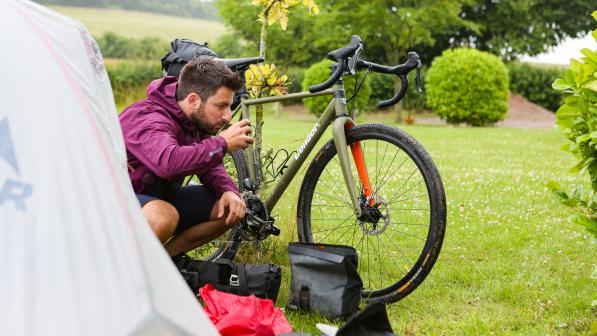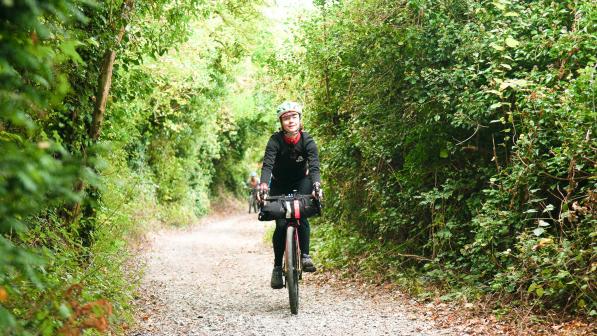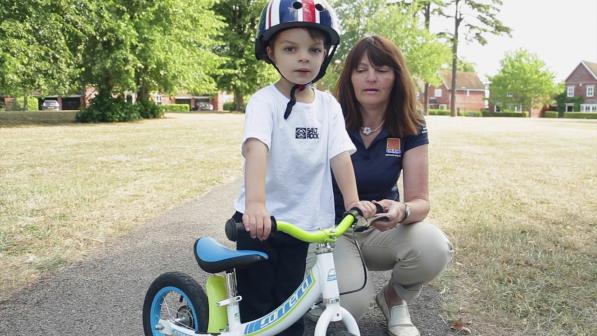How to cycle as a family during the coronavirus crisis
During this strange and awful time of pandemic and lockdown, there are perhaps a couple of benefits for those of us not directly impacted by this terrible disease. One of those is the chance to still go out cycling once a day, the other is to spend more time with other family members whom we normally only see at weekends, or when we’re nagging them to complete daily chores.
Now, of course, is also a great time to combine both of these activities by riding together as a family. Many roads are blissfully traffic free, with only essential travel permitted. The air is a lot fresher, football training is cancelled and, for most of us, the sun is even shining after a long, wet winter.
Until Government guidance changes, and other activities resume, walking and cycling are very popular options for most of us for physical activity away from home. Currently, group riding is not permitted unless with members of your household – and, if everybody is well and understands the rules around hygiene and social distancing, there’s no reason why you shouldn’t ride together.
With Easter holidays here, and home schooling on the back burner for a while, conditions are now ideal to venture out for some exercise and a much-needed change of scene.
They are also uniquely perfect for teaching your child some valuable cycling habits and life skills, which will stand them in good stead for years to come. Before you know it, lockdown will be over and they’ll be teenagers wanting some independence and the freedom to cycle to school or a friend’s house. Even teenagers can subtly be shown a tip or two.
Bikeability and the National Standard
Many youngsters will take Bikeability lessons at school (this scheme replaced Cycling Proficiency some years ago) at around age 10 or 11 but, whether they do Bikeability or not, or have done it already, practising what they have learned, or will learn, is vitally important. It ;can aslo make all of you more confident while cycling at a time when we might want to pick up new skills and do our bit to prevent the NHS from becoming overloaded.
Cycling is still statistically a safe activity anyway and never more so than now, says our campaigns manager Keir Gallagher.
So, while not wanting to replicate the whole National Standard syllabus Bikeability is based on, here are a few tips so you can make the most of this opportunity to ride with your children. However, we advise that nothing should replace professional instruction once it’s available again, as there is a lot more to Bikeability than we can cover in one article.
Remember, cycling should be enjoyable, so don’t overwhelm learners with advice: perhaps focus on one or two skills at a time then revisit them at a later date to refresh them.
However, if your children just want to enjoy some freedom and fun on two wheels, then let them or you might put them off cycling altogether!
When should I cycle with my children?
You are the best judge of when and where you think your child is ready to ride. Start somewhere away from traffic if possible such as an empty car park before moving to quiet, local roads when you’re sure they are able to be in control of their cycles and can follow simple instructions reliably.
Older children may be able to practise negotiating traffic lights, roundabouts and other more complex infrastructure at this time of incredibly empty roads, depending on where you live.
We don’t advise driving to a suitable location so if there isn’t one near home, leave it for another time.
Don’t forget to check their bike and clothing are suitable before venturing out. Has your child had a sudden growth spurt, with their knees now up around their chin? If so, put the saddle up a bit so they can extend their legs fully and riding will be easier and more enjoyable.
If you have to raise the seat so it’s past the recommended height (usually shown by a mark on the seat post), it’s time to buy or borrow a new bike (if possible).
If they’re still very wobbly, it might be because the bikes are too big or heavy for them, or they might just need to practise some of the skills below – many children nowadays don’t have the opportunity to go out cycling very often, unlike previous generations.
As a family, there is sometimes apprehension when cycling on the road, but with these tips from Cycling UK, we could all cycle together as a family unit and feel safe. Simple things that I didn’t know before, such as riding behind not in front of the children, were extremely helpful and made the children feel at ease
Charlotte Sale, mother
Before heading out on to the road or trails
If the child can’t cycle at all yet, start them off on a balance bike – remove pedals from a regular bike if you haven’t got a balance bike. Don’t use stabilisers as these don’t teach balance and can, in fact, be very unstable. Very young children can be carried on your bike in a suitable bike seat.
Once they can cycle independently, practise some essential Bikeability Level 1 control skills:
- Look where you want to go – especially when steering and turning
- Keep head up and back straight – there’s no need to look at the ground – to avoid wobbling
- Keep weight over the back of the saddle – don’t lean forwards and try to balance on the handlebars as the centre of gravity should be over the saddle
- Relax the arms and don’t grip the handlebars too tightly

- Keep brake levers covered (put hands on brakes at all times so you can apply them quickly). You might need to move them so the child can reach them more easily, if you know how
- Slow down gradually by stopping pedalling and freewheeling, rather than putting feet on the ground or jamming brakes on
- Brake by gently squeezing both brakes to come to a controlled stop before putting feet down – practise shouting “Stopping!” so following riders don’t pile into them

- Foot positioning – the ball of the foot on the pedals not the instep
- Legs and knees pointing straight ahead, not turned out to the side
- If they’re comfortable taking one hand off the handlebar, practise signalling (straight arm and flat hand), or try this off the bike if not
- Look behind – try to instil this habit every time they set off or change direction.
Road positioning
Once you’re confident they can ride independently and stop safely when told to, you can venture out on the road. We’ve got a complete guide to cycling on road with your children but here are a few of ;our top tips:
- Keep off pavements (unless they are designated as shared-use cycle paths) as there’s probably more people on them now, they won’t be practising vital road skills, reversing vehicles might not see them, and there are often kerbs and other street furniture and hazards to negotiate on the pavement or footway so they might not be as safe as you think
- Ride slightly behind rather than in front of younger children – you can keep an eye on them more easily, protect them from any following traffic, and give them instructions such as “slowing down” or “stopping” when approaching junctions

- If you’re riding with more than one child, put the oldest or more reliable child at the front and younger ones in the middle, keeping about 1m away from each other
- Ride away from the kerb a bit more than you might think, depending on the amount of traffic, so you can see and be seen
- Avoid the car door zone too and move further away from the mouths of junctions and turnings
- Keep monitoring the road ahead, behind and to either side – point out any potential hazards and encourage your children to spot them for themselves.
Now the roads are much quieter, it’s a great time to put these skills into practice by riding their routes to school or to friends’ houses, if they're fairly local.
Last year, we partnered up with Uber Eats to produce a series of videos and guides to “inspire individuals to adopt best practice cycling behaviour and empower new and existing cyclists to cycle safely” so have a look at those too – you might even pick up some great tips yourself.




